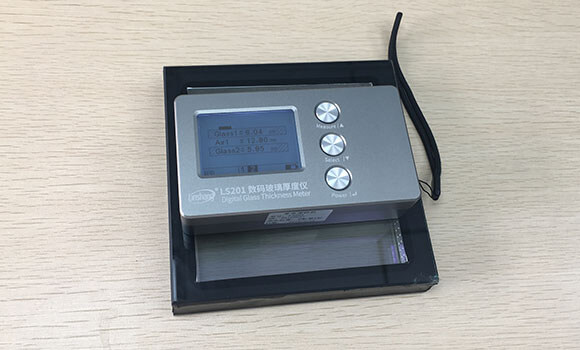How to Measure the Low-E Glass Thickness?
Glass is an important building material. As people continue to increase the decorative requirements of buildings, the use of glass in the construction industry has also increased. With the development of living standards, people not only consider beauty when choosing glass, but also pay more attention to the thermal insulation and radiation resistance of glass. The growing demand has also promoted the development of Low-E glass (coated glass).
Low-E glass, also known as coated glass, is a product composed of multiple layers of metal or other compounds coated on the glass surface. The coating layer has the characteristics of high transmission of visible light and high reflection of mid- and far-infrared rays, which makes it have excellent heat insulation effect and good light transmission compared with ordinary glass and traditional architectural coated glass. LOW-E glass is a green, energy-saving and environmentally friendly glass product. The surface emissivity of ordinary glass is around 0.84 and the surface emissivity of LOW-E glass is below 0.25. This low emissivity film layer, which is less than one percent thick of the hair strand, has a high reflectivity to far infrared thermal radiation. LOW-E glass can reflect more than 80% of far infrared thermal radiation back. The far infrared reflectance of ordinary transparent float glass and endothermic glass is only about 12%.
Why do more and more customers choose Low-E glass? This glass can adjust the indoor air temperature in summer and winter according to the sunshine and temperature, which improves the comfort of the human body indoors. In winter, the indoor temperature is higher than indoors and the far-infrared heat radiation mainly comes from indoors. Low-E glass can reflect it back to the indoors, thereby keeping the indoor heat from leaking. In summer, the outdoor temperature is higher than indoors and the far-infrared heat radiation mainly comes from outside. Low-E glass can reflect it out, which prevents heat from entering the room. For solar radiation from the outside, Low-E glass with low shading coefficient can be selected to restrict its entry into the room, so that the room will not be too hot.
The Low-E glass used in different buildings also has certain thickness requirements. The door and window glass of commercial buildings is 6 mm thick. If it is guardrail glass, the thickness is generally 12mm. After the decoration is completed, some customers require measuring the installed glass thickness to check whether it is qualified. This makes the construction staff very difficult. The LS201 glass thickness meter developed and produced by Linshang Technology is an instrument to help customers measure the thickness of installed glass. The measurement range of this glass thickness meter is glass thickness 70mm and air interlayer 45mm, which can meet the general measurement needs.
The LS201 glass thickness meter uses the optical reflection principle to measure the glass thickness on single side. It is especially suitable for general measuring tools such as scales or vernier calipers that cannot or are difficult to operate, such as architectural laminated glass, hollow glass windows, Low-E glass thickness measurement. For the measurement of air-laminated glass, the thickness of the multi-layer glass and the intermediate air layer can also be obtained at the same time. The LS201 glass thickness metesr uses CCD detection, liquid crystal display. It has simple operation, fast and reliable measurement.
